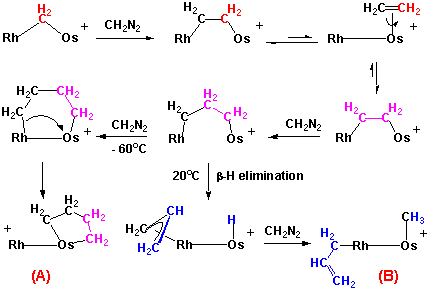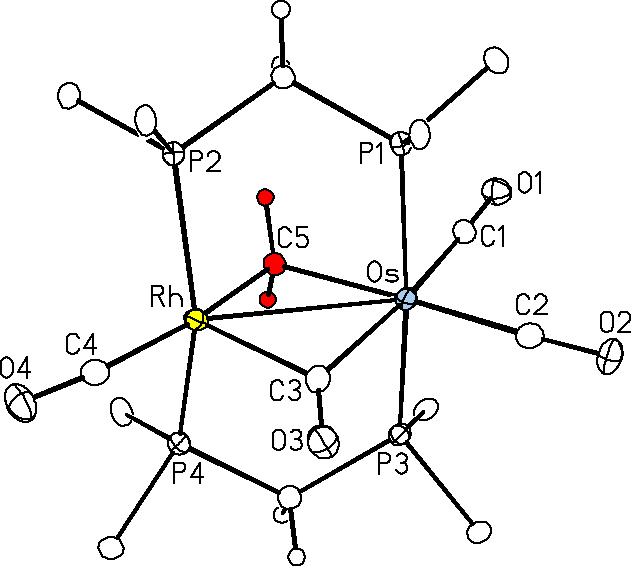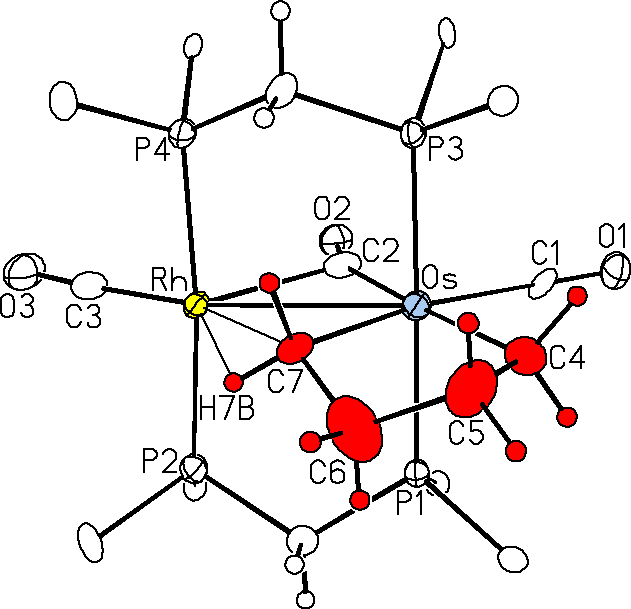Martin Cowie
|
|
|
Professor Emeritus |
Education
B.Sc., McMaster UniversityPh.D., University of Alberta
Research
Complexes containing two or more adjacent metal centres offer an added chemical dimension over those containing a single metal; not only can the metals act independently but they can also act in a cooperative manner leading to chemistry that differs appreciably from that displayed by the single metal counterparts. It is the prospect of metal cooperativity which is of primary interest to my research group, in its application to organic synthesis and catalysis. We are therefore involved in the design, synthesis and characterization of novel complexes containing two or more adjacent metal centres and with the subsequent chemistry of these species. The compounds under study either have all metals the same or metals which differ, and utilize bridging groups such as the diphosphines, Ph2PCH2PPh2 and Et2PCH2PEt2, to hold the metals together maintaining the integrity of the complexes during the reactions.
One aim of our research is to obtain an understanding of how adjacent metals interact with substrate molecules during catalysis and to this end we attempt to model catalytic reactions in order to characterize species which are analogous to proposed catalytic intermediates. Processes of concern to us include: Fischer-Tropsch chemistry, hydrogenation and hydroformylation reactions, CO and CO2 activation as related to their utilization as chemical feedstocks, and H2 production from non-conventional sources.
We also have ongoing interests in late-metal-hydride, alkyl, olefin, vinyl and carbene complexes, and in metal-promoted carbon-carbon, carbon-hydrogen and carbon-fluorine bond formation and cleavage. Currently we are modelling the involvement of adjacent metals in Fischer-Tropsch chemistry using a variety of methylene-bridged binuclear complexes containing either Rh or Ir together with different combinations of Co, Rh, Ir, Fe, Ru or Os, and are investigating the use of adjacent metals to effect the activation of carbon-fluorine bonds. C-F bonds are extremely strong and their selective activation under mild conditions remains a challenge. We have recently succeeded in effecting the facile activation of C-F bonds in fluoroolefins and have clearly established the cooperative involvement of adjacent metals in the activation process.

Scheme proposed on the basis of 13C and 2H labelling studies for the stepwise coupling of methylene groups on a bimetallic RhOs core, yielding selectively the butanediyl (A) or allyl methyl (B) complexes under appropriate temperature conditions. Red atoms are fully labelled; magenta and blue ones are fractionally labelled, resulting from scrambling of the respective isotopes. Ancillary ligands such as carbonyls and diphosphines are omitted for the sake of clarity.


3-D representations of the methylene-bridged precursor and complex (A) from the methylene-coupling scheme shown above.
Selected Publications
J.N.L. Dennett, M. Bierenstiel, M.J. Ferguson, R. McDonald, M. Cowie, "Various Coordination Modes of the Bis(di(o-N,N-dimethylarilinyl)phosphino)methane Ligand in Mononuclear and Binuclear Complexes of Groups 8 and 9 Metals", Inorg. Chem. 2006, 45, 3705-3717.
J.R. Wigginton, S.J. Trepanier, R. McDonald, M.J. Ferguson, M. Cowie, "Alkyne/Methylene Coupling Reactions at Adjacent Rh/Os Centers: Stepwise Transformations from C1- Through C4-Bridged Species", Organometallics 2005, 24, 6398-6410.
M. Cowie, "Roles of the Adjacent Metals in the Coupling of Methylene Groups Promoted by Heterobinuclear Complexes of Groups 8 and 9 Metals", Can. J. Chem. 2005, 83, 1043-1055.
S.J. Trepanier, J.N.L. Dennett, B.T. Sterenberg, R. McDonald, M. Cowie, "Selective Coupling of Methylene Groups at a Rh/Os Core, Yielding C2, C3 or C4 Fragments: Roles of the Adjacent Metals in Carbon-Carbon Bond Formation", J. Am Chem. Soc. 2004, 126, 8046-8058.
B.D. Rowsell, R. McDonald, M. Cowie, "Bridging Methylene to Bridging Acyl Conversion in Heterobinuclear Rh/Ru Complexes: Models for Adjacent-Metal Involvement in Bimetallic Catalysts", Organometallics 2004, 23, 3873-3883.
